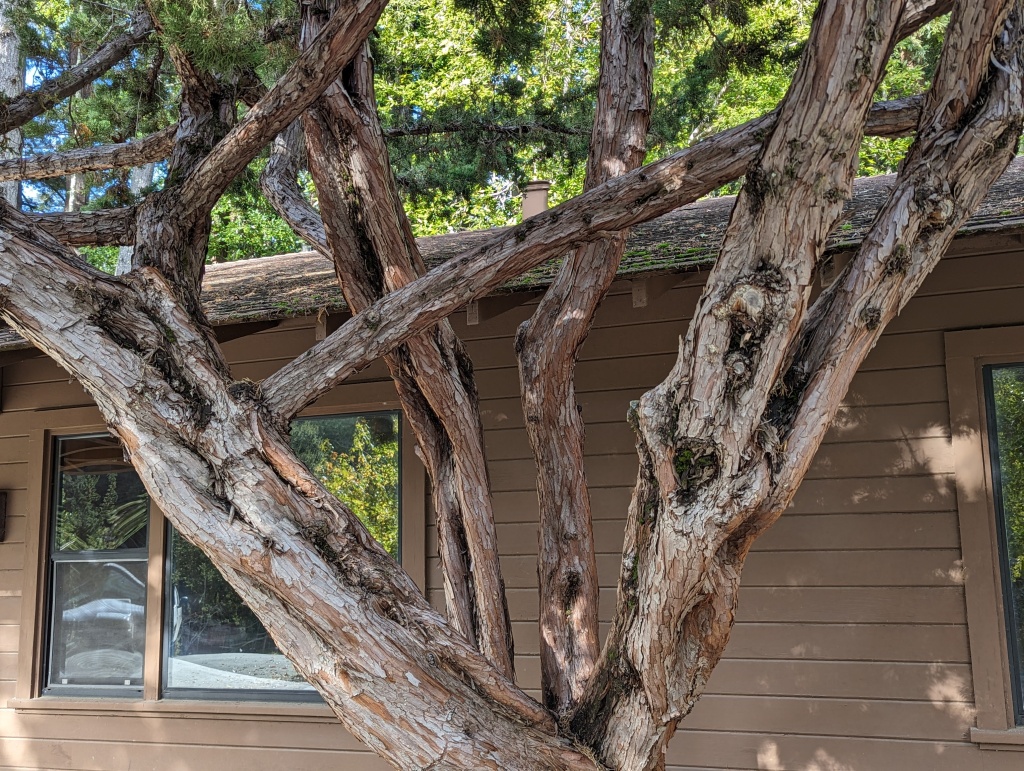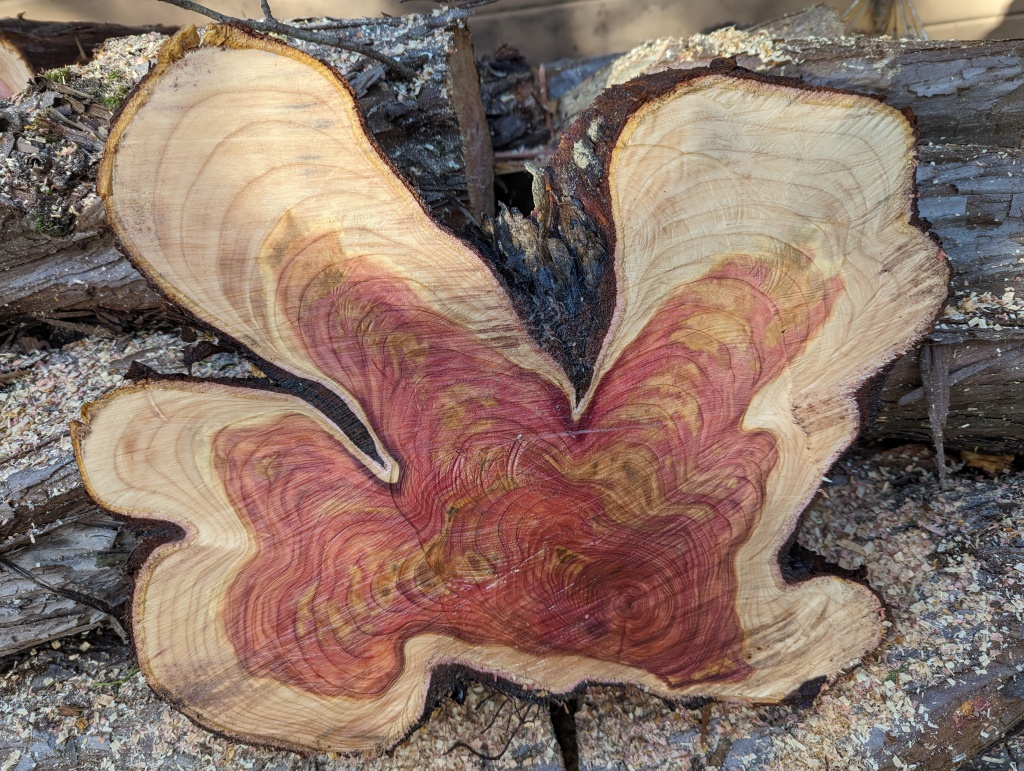
Juniperus chinensis ‘Kaizuka’, Hollywood juniper is one of my favorite junipers. The few North American junipers that I prefer more are not as appealing for prominent positions within refined landscapes. Hollywood juniper is distinctly sculptural with its strikingly gnarly form. The dense, finely textured and deep green foliage contrasts stylishly with the more coarsely textured and rusty reddish brown bark. Whether a large shrub or a small tree, properly groomed Hollywood juniper can be an elegant trophy tree.
The illustration above is from my ‘Six on Saturday’ post from two weeks ago. It shows one of the largest specimens of Hollywood juniper that I have ever worked with. Initially, I pruned it for clearance from the roof and parking spaces that it extends its canopy over. I also thinned it somewhat. I intended to elevate and thin it a bit more this year or next.
Instead, it became firewood. Sadly, it grew too big and obtrusive for its situation. One of its large roots was displacing the asphalt pavement of the parking spaces in front of it. Another was beginning to do the same. It was very saddening to see it dismembered and processed, as the foliar canopy was discarded to compost into the forest, and the trunk and limbs were taken to a woodpile.
Even as firewood, it retained unique beauty. The illustration below shows the contrast of the red heartwood and blond younger wood within the interior of the gnarly trunk. If it resembles the interior of a cedar chest, it is because it is related to the Juniperus virginiana, Eastern redcedar, which is the cedar within cedar chests (but is not actually a real cedar). Although not visible within the illustration, the woodsy aroma of the exposed wood is very similar to that of a cedar chest.

It’s interesting that the cedar/juniper terminology exists there, too. Our Ashe juniper (Juniperus ashei ) often is called by a variety of names that involve cedar, but Texas cedar is most often used. It’s a prodigious pollen producer, when when it releases its clouds of pollen, usually around January, people around the state curse “cedar fever.”
LikeLiked by 1 person
Incidentally, most cedar coat closets of old homes here are lined with Calocedrus decurrens, California incense cedar, because it grows wild in the Sierra Nevada, so, when such homes were built, it was more readily available than imported Eastern redcedar from Eastern North America. Such wood is more uniformly red, without the blonde streaks, and produces a different aroma. Most cedar chests here are made with Eastern redcedar though, because they were imported from Eastern North America. I suppose it is all passe anyway, since wool is so unpopular, fur is vilified, and homes are too sealed up for moths to get in.
LikeLiked by 1 person
Such a shame it could only be used for firewood as it would look wonderful made into furniture. I bet it smelt wonderful when freshly cut.
LikeLiked by 1 person
If I had thought about it, the gnarliest pieces of the trunk could have been sliced into thin but irregular disks for whomever would have wanted them. Someone took the disk that was in the picture. PIeces of Eastern red cedar are available from hardware stores to put into closets. I think that they only smell nice though. There is no need to repel moths anymore.
LikeLiked by 1 person